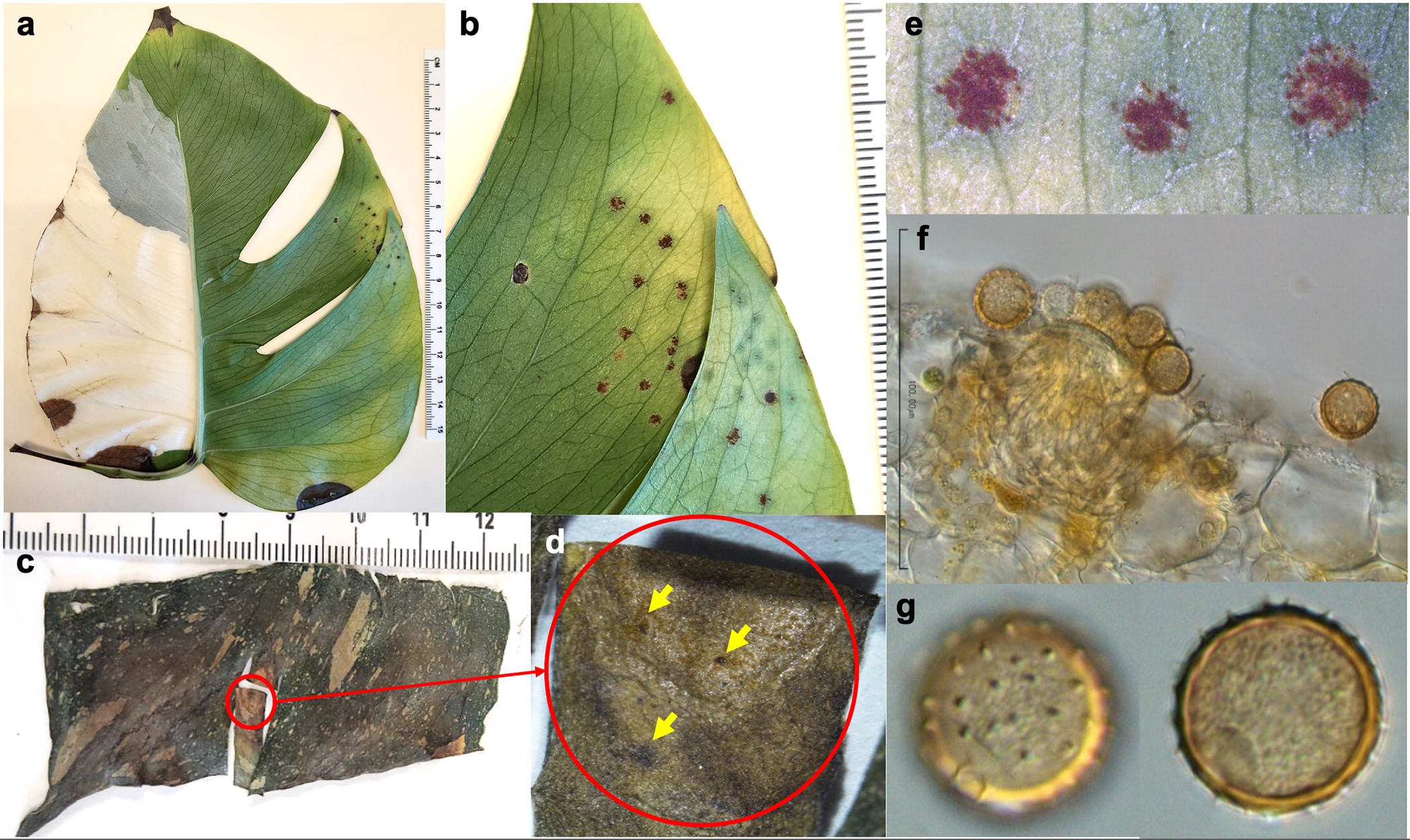To determine the distribution and diversity of the rust Pseudocerradoa on Monstera species (e.g., Swiss cheese plant, split-leaf philodendron, five-holes plant, etc.), the USDA Mycology and Nematology Genetic Diversity and Biology Laboratory is seeking fresh specimens from across the United States. Symptoms of this disease include small chlorotic leaf spots that expand and become brown to reddish-brown, often with a yellow halo, and uredinia with abundant urediniospores (Urbina et al., 2023) (Figure 1). Leaf spots can be subtle, especially if the leaf has dried (Figure 1). Urediniospores are globose, reddish-brown in mass, honey-colored when mounted, echinulate, and measure ~22.5–34.5 μm in diameter (Shaw, 1991) (Figure 1).
Although its known host is Monstera deliciosa (split-leaf philodendron or Swiss cheese plant), symptoms have been artificially induced on Epipremnum pinnatum, Monstera adansonii, M. standleyana, and M. subpinnata. According to the USDA Fungal Databases (https://fungi.ars.usda.gov/), this rust has been detected in Alocasia, Amorphophallus campanulatus, and Monstera deliciosa in other countries.
To send samples (at least one large leaf with at least 10 pustules with urediniospores, pressed and dried between sheets of newspaper), please contact Dr. Megan Romberg (megan.k.romberg@usda.gov).

Figure 1. Symptoms and signs of Pseudocerradoa paullula on Monstera. a, b. Symptoms (leaf spots and yellowing) on fresh samples. c, d. Subtle symptoms on a dried leaf (yellow arrows indicate pustules with uredinia and urediniospores). e. Pustules with uredinia and urediniospores. f. Uredinia. g. Urediniospores.
References cited:
Shaw DE 1991. Rust of Monstera deliciosa in Australia. Mycol. Res. 95: 665-678.
Urbina H, Jones C, Moore M, Gazis R. 2023. Detection of aroid leaf rust Pseudocerradoa paullula on Swiss cheese plant Monstera deliciosa in the continental USA. Plant Dis. 107: 2520

